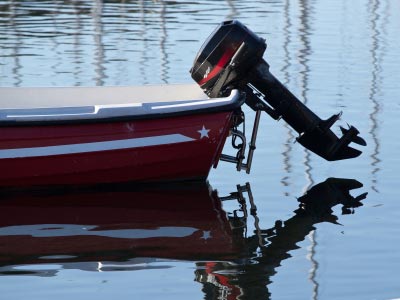< Back to part 2

What About The Future?
The current design of kill cords has a lot in its favour. It is simple in design, highly recognisable and virtually universal. It is also easy to attach to the helmsman, very visible and easy to check. But still many boaters do not use them. Definitely a change in behaviour is needed. The RYA has been working to expose awareness to kill cord safety for many years and to increase public understanding of kill cord discipline. The correct use of kill cords is a key part in their Powerboat Level 1 and Level 2 training courses. The British Marine Foundation too have discussed the issue of kill cords and agreed to the necessity of raising awareness and educating boaters. Last month the PSP Southampton Boat Show did its bit to raise awareness of the issue by giving advice, guidance and demonstrations.
New devices have been considered, such as, pressure points on the steering wheel or helm seat, which sense whether the helm is occupied or not and that kill the engine if not depressed for a certain period of time, or a GPS device attached to the helmsman which cuts out when outside a certain range of the boat. Other suggestions are optical or thermal sensors similar to a burglar alarm. Some boat builders favour wireless kill cords but they are restricted by what is warranted by the engine suppliers and many inboard engines used in small open boats have no warranted kill cord option.
There are at least two wireless kill cord systems on the market, both sold in the UK, one designed in the US and the other in Norway. They both rely on small battery-powered radio transmitters worn around the neck or securely clipped on. A continuous signal is sent to a control box mounted on the helm. As soon as contact is lost with the remote fob the engine is cut. They have been tested and seem to work well, but are not widely used as the market seems to be driven by the outboard and sportsboat manufacturers in the US. The additional cost, complexity and fear of litigation because of failure to operate are all factors putting manufacturers off the replacement of the existing manual kill cord.
Another device is the Passive Radio Frequency Identification (pRFID) tag. It operates without a power source and can be encased in plastic or silicone to make it 100% waterproof. It is also cheap to manufacture. It consists of a small black box and an antenna at the helm which sends out a high-frequency pulse. This energises the battery-free tag enabling it to send a unique ID code back to the receiver, so as soon as the helmsman falls overboard or moves out of range, the engine is cut. It has many points in its favour but its range is limited to a few feet unless secondary antennas are fitted around the boat. It also relies on the operator to wear and use the fob and is more expensive to manufacture than the manual kill cord.
Another option is to use the existing kill cord but with an alert system, similar to that on cars, that reminds the helmsman to clip his kill cord on.
The Legal Picture
Amazingly there is no legal requirement for a kill cord to be fitted to any kind of boat in the Recreational Craft Directive (RCD), which is the safety standard to which all boats in the EU have to conform. There is however a section in the Inland Waters Small Passenger Boat Code which states that, "All inflatable boats, those fitted with buoyant collar and open boats able to achieve planing speed, should, if they have remote throttle controls, be fitted with a kill cord, which must be used at all times".
Despite the lack of boatbuilding legislation, most outboard engine manufacturers do supply a kill cord system with every engine sold and most manufacturers of sportsboats and RIBs powered by inboard engines choose to fit them. The reason for this may well be the threat of litigation, especially in the US.
It is refreshing to note that Honda actually offers free RYA Level 2 training with the purchase of one of their outboards from 50hp upwards. This training includes the importance and correct use of kill cords.
Whilst there is no legal obligation for leisure boat owners to wear a kill cord, even if it is fitted to the boats, there may be a clause in your insurance policy which requires you to operate the boat safely, which could include the correct use of a kill cord. Commercial operators are governed by a code of practice which does require them to wear a kill cord when fitted.
Finally
Far more car drivers now wear seat belts since it became a legal requirement – would the same work for boaters? Probably not, as it would be far more difficult to enforce and attempts at legislation creates yet another barrier to boat ownership. The best way forward seems to be changing the public's attitude with widespread publicity so they begin to realise that it is socially acceptable to wear a kill cord and not an "un-cool" practice. Unfortunately the sort of events which change people's attitudes to the wearing of kill cords are the fatal accidents like the most recent one at Padstow. Sadly memories fade and there will be more fatalities in the future. What those of us who understand the importance of kill cords can do is to spread the message and show others by our example.
Author – Dee White